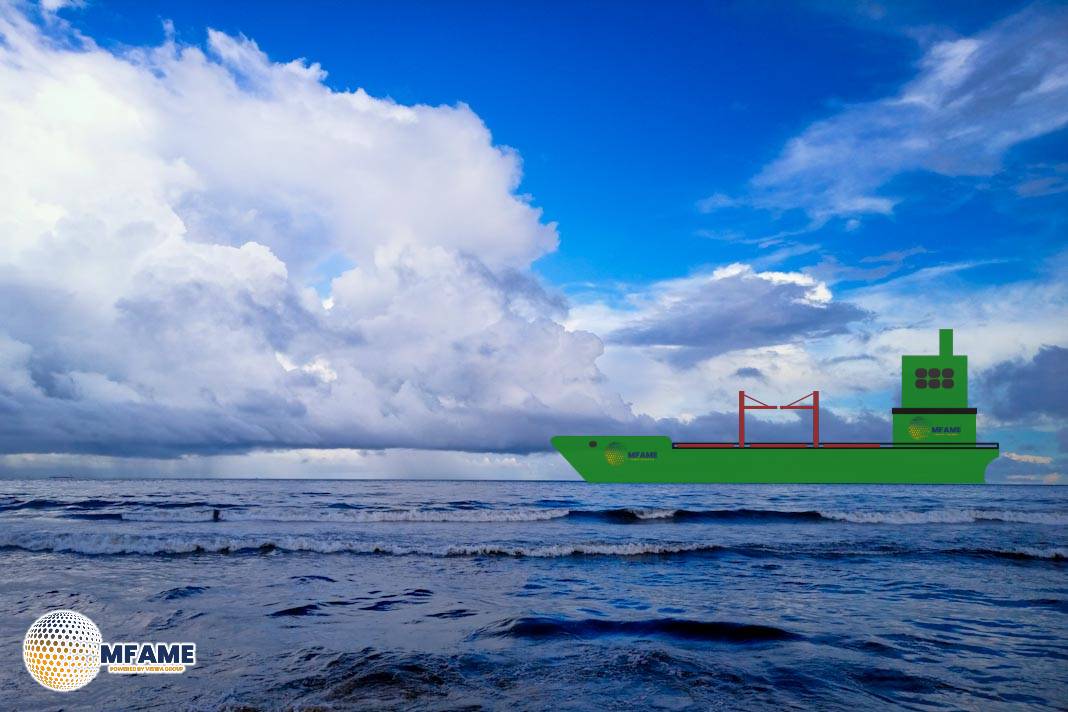- MEPC83 Needs to Score Big on Climate or Sink the 2050 Goal.
- A Carbon Levy Alone Won’t Save Shipping.
- MEPC83 Must End the Era of Fossil-Fueled Ships.
MEPC83 is fast approaching. While it may not be the final opportunity to steer the shipping industry towards zero emissions by 2050, time is rapidly running out. If this were a football match, we’d be in the 118th minute of extra time, desperately searching for a winning goal. But unlike football, there’s no lottery of penalties in this game—only the stark reality of game over. Similar to the World Cup, almost all nations are engaged. But rather than fighting for a trophy, here the actual task is to gain consensus. And that’s not proving any easier, reports T&E.
Reaching Zero Needs an Entire Strategy
With several proposals in play, the path to zero is contentious. Still, one reality remains clear: achieving zero emissions by 2050 will be nearly impossible without a global carbon levy, a green fuels mandate through a GHG Fuel Standard, and advanced energy efficiency improvements.
A Global Carbon Levy Is Imperative
A global carbon tax implements the simple principle that polluters pay for the harm that they do. It’s an easy idea on paper, but not everyone is playing along. Countries such as Saudi Arabia and Brazil still resist, fighting to maintain the status quo and permitting shipping emissions to go pretty much unregulated.
Transport & Environment (T&E) is calling for a strong carbon charge of $150 per tonne of greenhouse gas emissions. This would be a strong signal that polluting has a price, but would also pay off companies that are making a transition to cleaner energy. But most importantly, the money raised could be used to bridge the cost difference between dirty fuels and cleaner ones. It would also establish a fund to assist climate-vulnerable nations—those least guilty of emissions, but most vulnerable to their impacts—in achieving a just transition.
Fuel Policy Needs Clear Demand Signals
But a carbon tax alone will not do the trick. Climate change requires that we begin to invest in low-carbon fuels immediately, and for that to occur, regulators must give certainty to the marketplace. That’s where the GHG Fuel Standard (GFS) comes into play. By establishing regulations that ensure demand for low-emitting fuels, the GFS would spur private and public investment in the areas most needed.
The majority of nations concur that the filthiest fuels must be eliminated but debate how to quantify emissions and what substitutes should be encouraged. Three issues are at the heart of the disagreement: how fast and how far ships should reduce their greenhouse gas emissions, what fuel should be considered green, and what sanctions should be imposed if firms are not meeting their objectives.
Binding Targets for Real Progress
The first hurdle is defining the ambition. Without binding objectives from today until 2050, loose climate targets will be simple to overlook. The International Maritime Organization (IMO) has to make firm emissions reduction targets that provide the industry with clear direction and certainty in the long term.
Drawing the Line on Dirty Fuels
The second test—choosing which fuels to encourage—should be a no-brainer. Fossil oil and gas aren’t green, and neither are biofuels made from crops. Indeed, a new report by T&E concluded that the IMO’s current path risks incentivising deforestation-based biofuels. Unless checked, this could result in an additional 270 million tonnes of greenhouse gas emissions by 2030, making things worse than they are now.
What we require is a policy context favoring truly sustainable fuels, particularly green hydrogen and its by-products. Such fuels are critical to decarbonising the industry but will never catch on unless they have financing support in the early days.
Efficiency Is a Ready-Made Solution
As scaling up green hydrogen will be a long-term process, there is no reason to delay in acting on ship efficiency today. Ships can already lower emissions by adopting wind-assisted propulsion, slowing ship speeds, and coordinating more effectively with ports to avoid unnecessary idling. These are technologies and practices available today, and their ability to reduce emissions rapidly shouldn’t be doubted.
CII: Don’t Waste an Easy Win
The Carbon Intensity Indicator (CII) is intended to drive ships toward improved fuel efficiency. But if it is to be effective, the IMO has to make the system strong. If they buckle to pressure for loopholes and exemptions, they’ll be discarding one of the most tangible and feasible instruments for decarbonisation.
What Success Looks Like at MEPC83
The ideal output from MEPC83 would be a package consisting of a lifecycle emissions-based fuel standard, binding emissions reductions up to 2050, a global carbon charge of $150 per tonne, and robust, enforceable CII.
This type of result would not only create regulatory certainty and secure long-term investment in clean technology—it would also make the transition to zero emissions equitable, accessible, and affordable.
Did you subscribe to our daily Newsletter?
It’s Free Click here to Subscribe!
Source: T&E


















